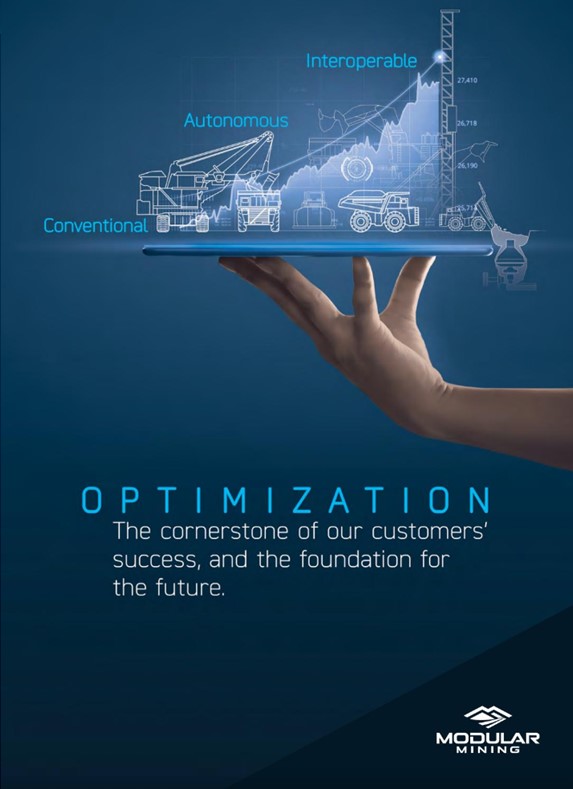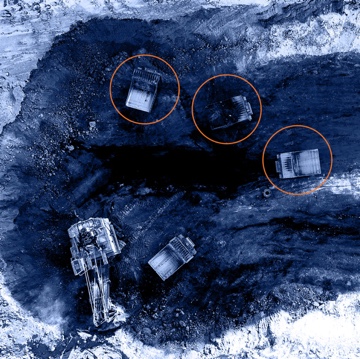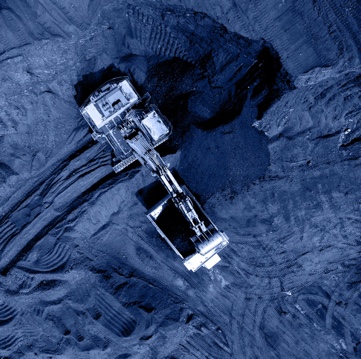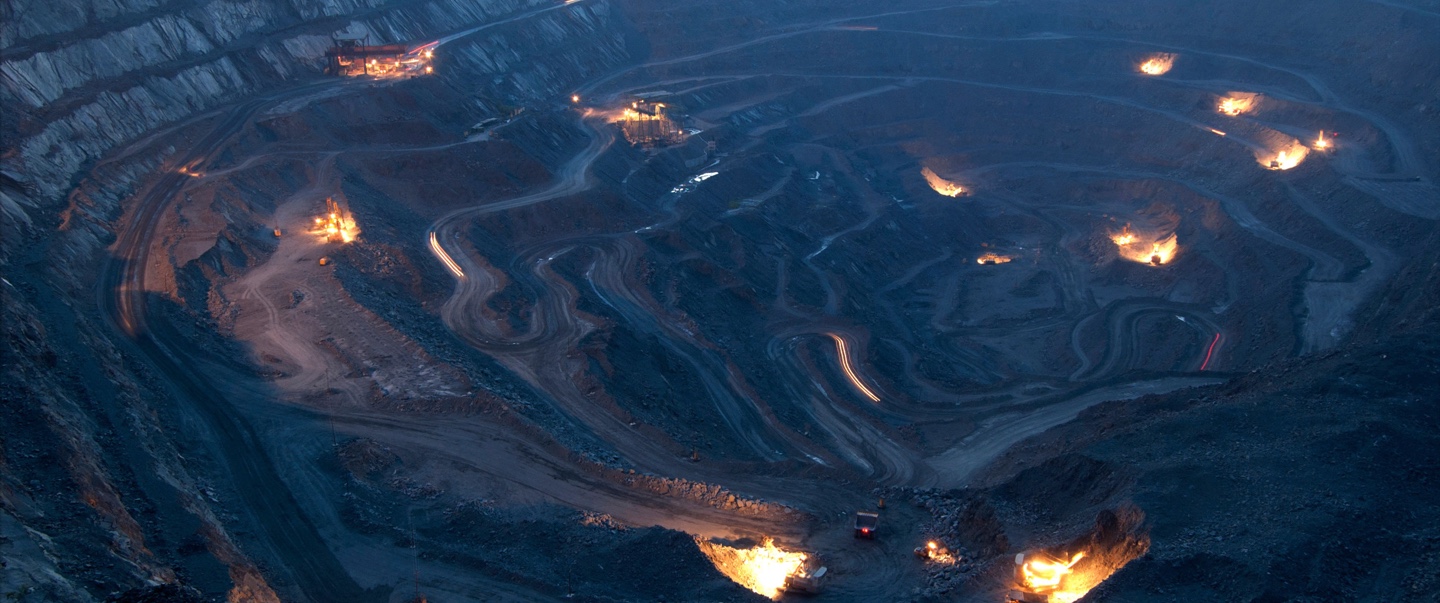Mining Optimization Series: Part 1
What does it mean to optimize your mine?
Optimization is the cornerstone of our customers’ success. It’s the foundation of our business, and the future of it, too – but what do we really mean when we say, ‘optimization’? What is optimization? What isn’t optimization? Why does it matter? Over the course of this blog series, we’ll resolve these questions, and more, as we dig deeper into understanding why mining optimization is so important to our customers’ success.
What is optimization?
The word, “optimization,” is somewhat ambiguous; the Oxford English Dictionary defines it as: the action of making the best or most effective use of a situation or resource. For us, that has historically meant dynamic, automated truck assignments based on real-time situational information. Leveraging our industry-first and still best-of-breed algorithm, the DISPATCH® Fleet Management System (FMS) pioneered mining optimization by helping mines move more material, more efficiently.
“Our entire history, and everything we develop, centers on the principle of optimization,” says Lourens du Plessis, VP of Customer Value at Modular Mining. “The people that started this company – including a Professor of Chemical Engineering – understood how to use linear programming to optimize the production environment in the mine.”
You’ve probably heard the story: in the late 1970s, then-Professor of Chemical Engineering at the University of Arizona, Dr. James White, was visiting the nearby Phelps Dodge Tyrone Mine when he witnessed trucks idling in queues at one shovel, while other shovels sat hanging, ready to load but with no truck nearby. “There’s got to be a better way,” he famously said, spawning what eventually became our unrivalled fleet optimization algorithm, as well as our subsequent maintenance and machine guidance technologies, and the Modular Mining company as a whole.
Dr. White and his colleagues helped Phelps Dodge optimize their truck assignments in an automated and dynamic manner, which in turn optimized their fleet utilization and, ultimately, enabled them to move 11% more material on average (click here to read a 1981 article from the Silver City Daily Press). While automating truck assignments still drives much of the logic within today’s version of the DISPATCH FMS, the algorithm has evolved to consider more data and provide better granularity than we could decades ago.

By considering more constraints (which are continuously changing) and collecting more data related to locations, road and weather conditions, shovel priorities, crusher capacities, blend constraints or targets, travel speed uphill vs. downhill, trucks with varying performance or speed capabilities, and more, the DISPATCH system’s optimization capabilities have evolved to help miners achieve their specific goals.
But optimization is not just a matter of a really good algorithm. It also requires people, and the volition or commitment of those people – on both the mine side and the technology side.
“Without these three factors, you can’t have optimization,” says du Plessis. “You won’t get optimization unless you want it.”
What isn’t optimization?
The key to mining optimization is in an FMS’s ability to make the best decision, quickly. Systems that simply measure or track the movement of material from a particular loading location to a particular dumping location can typically offer cost-effective production tracking, but they don’t actually optimize an operation. Simply put, they don’t make decisions or offer targeted insights that improve decision-making and, ultimately, operational performance – and therefore result in unresolved inefficiencies and unrealized value.
Typically, one of these systems will “lock” one piece of equipment to another and trucks will run between the same shovel and the same crusher for an entire shift. This process is typically decided by the shift supervisor, based on their understanding of their goals for the oncoming shift. But the process can be very inefficient and prone to human bias, since it’s based on personal judgement rather than objective computed calculations. It also can’t account for upset events – so an unexpected hose failure on a shovel or poorly-executed operator break can wreak havoc on a mine’s ability to meet their shift production goals.
Without Optimization

- Trucks queue at shovels, often as a result of locked equipment assignments
- Idle trucks waste unnecessary fuel, driving higher operational costs
- Unproductive trucks threaten achievement of production goals
With Optimization

- Trucks arrive at shovels just in time to be loaded (as a result of dynamic equipment assignments)
- No (or minimized) truck idling saves fuel and money
- Increased truck and shovel productivity enables mines to hit production targets
When it comes to fleet management, “optimization means ensuring that trucks arrive at shovels just in time to be loaded,” says Neil Ferreira, Modular Mining’s Associate Director of Product Strategy. “After it’s dumped, a truck will automatically be sent to the most opportune loading location, so there’s no static allocation of truck routes, as is required from production tracking systems. This dynamic and automatic assignment capability is where you get the efficiency gains.”
A large iron ore mine in Brazil recently experienced this first-hand. After working with our consulting team to unlock nearly all of their equipment, they increased their productivity by more than 5%.
While wide-scale locking of equipment to specific routes is not generally a good practice when trying to optimize mine production, sometimes it’s necessary to lock a few trucks and/or shovels.
If a miner wants to build up a stockpile with a particular grade or material, for example, the dispatcher would likely lock the trucks carrying that material so they can only dump at that stockpile.
While many FMSs provide this capability, the problem with locking some or all equipment is that it’s often overused to the point of negating the optimization algorithm.
Consequently, mines that run their fleet management systems predominantly in “locked” mode achieve similar results to those using a simple production tracking system.
Running more trucks, or running them faster, isn’t necessarily optimization, either.
“By adding trucks, you may not achieve much more except for increased queuing time and operating costs,” says Ferreira. “A truck that travels faster, only to wait in line at the same shovel, just wastes more fuel.”
Why does mining optimization matter?
Minimizing equipment idle time and shovel hanging time is one of the most prominent ways in which optimization can improve a mining operation’s processes and profit.
“By leveraging linear programming to space trucks evenly in the production environment, and thereby eliminating truck queues, optimization has a direct impact on a mine’s bottom line,” says du Plessis. “The trucks no longer have to sit idle, waiting, burning fuel. Everything’s nicely spaced out, and you have optimized use of those trucks. In many cases, you discover you have too many trucks, or too few – so by applying mathematics to the mining context, optimization can directly help a mining company’s bottom line.”
For example, a mine in Wyoming, USA, saved nearly $1 million in fuel costs by leveraging the DISPATCH system to limit their truck idle time and improve their operator practices.
“You should only use the equipment you need to meet your goals,” Ferreira continues. “Within the optimization process, the DISPATCH system will calculate the number of trucks that are required to achieve a particular goal throughout the shift, based on how the performance is going.” That gives the mine the opportunity to park unneeded trucks, which provides an extreme cost savings and further minimizes the potential for queues.
A direct example of this comes from the AGD Diamond Mine, in Russia, which dramatically reduced their truck queues at the crusher, and resulting idle time, after working with our support team and leveraging the DISPATCH FMS to optimize and automate operator assignments.
Similarly, after conducting an ROI analysis to determine whether to purchase a new haul truck or to instead implement the DISPATCH FMS’ optimization capabilities, the Copper Mountain Mine, in British Colombia, Canada, found that the FMS helped them realize a 4% hourly production increase – the equivalent to the volume of material moved by an additional 1.04 haul trucks – without the $4.2 million price-tag of a new truck. (Click here to read more about this success via an article published in International Mining.)
“Optimization is the golden thread – it’s woven into everything we do,” says du Plessis. “Everything we develop, and all of our consulting offerings, are tied back to optimization and helping our customers maximize the use of their assets. It’s in our DNA, and it’ll be just as important to us tomorrow as it is today.”
Miners have a responsibility to deliver a certain quantity and quality of material to their customers for processing. Therefore, being able to ensure they deliver only what’s needed serves as a great cost control method because they don’t need to treat more material than necessary, and they avoid over- or under-delivering on quality. Optimization helps mining companies manage, track, and plan for their material movement with much more granularity and accuracy than simple production tracking systems can, ensuring their ability to deliver precise quantities and qualities.
While this initial post in our Optimization blog series highlights some of the primary benefits of optimization, there are many more. Next time, we’ll dig into those additional benefits, including the value that can be unlocked by pairing the DISPATCH FMS with other technologies and leveraging that data to expand mining optimization across the value chain.
SUBSCRIBE to our blog


